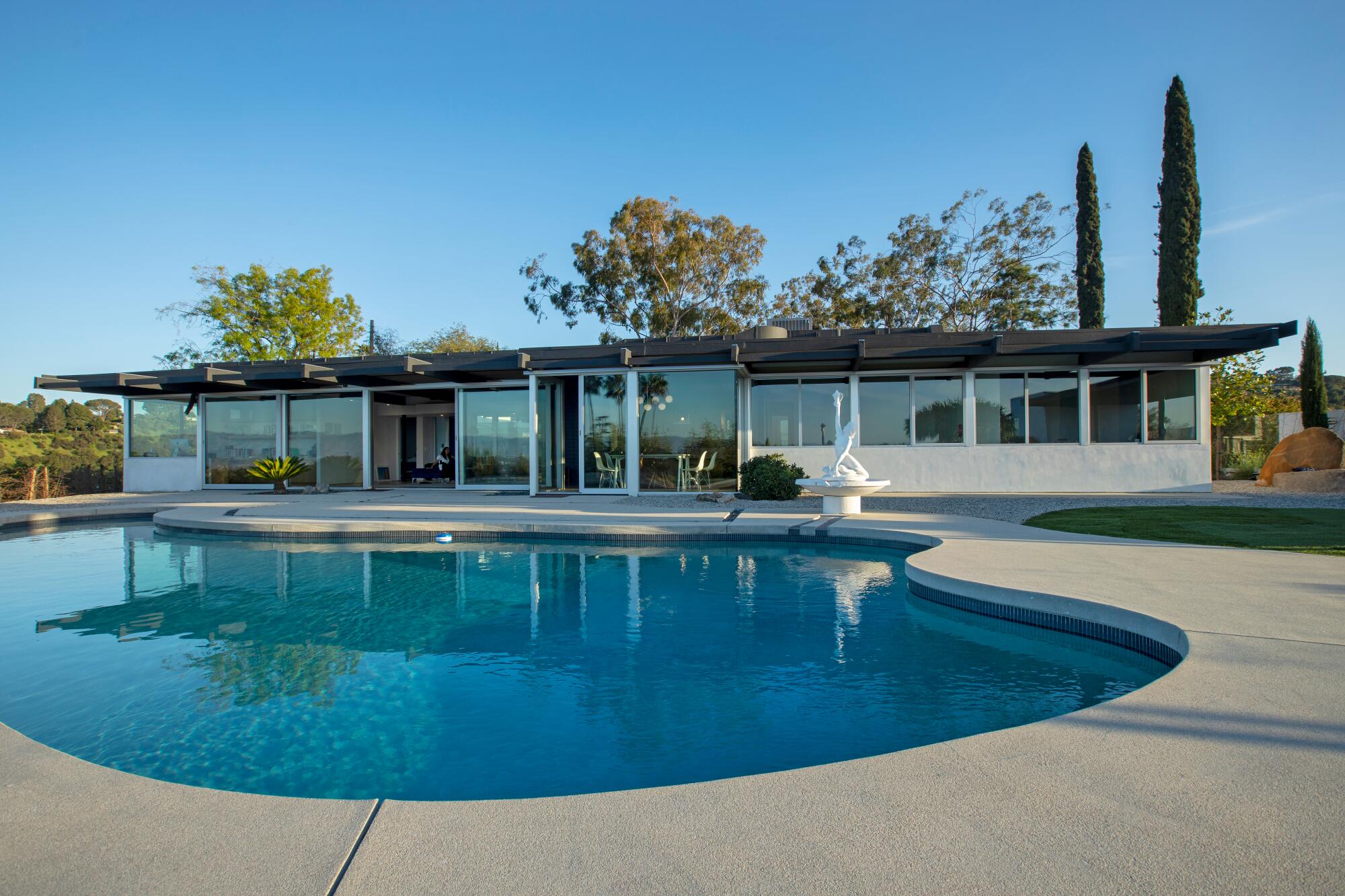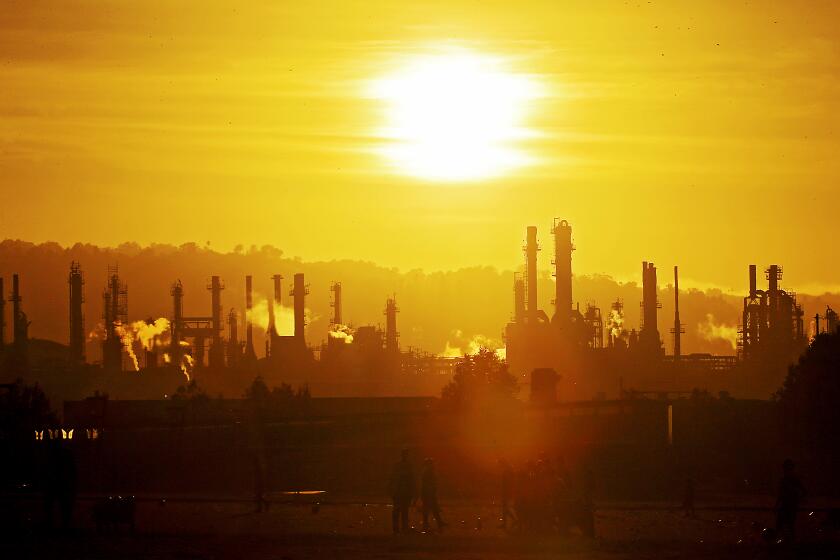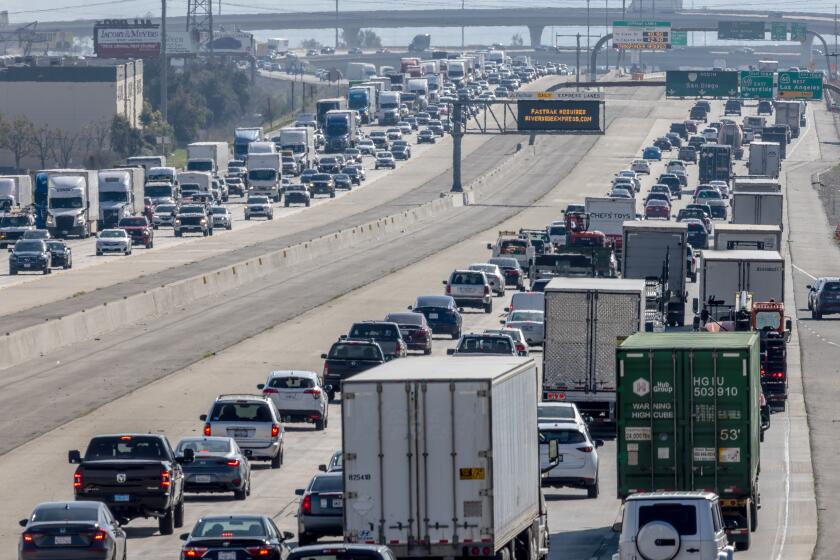
- Share via
In one of the biggest moves to reduce air pollution in the past decade, Southern California air regulators on Friday adopted a rule that will require pool and hot tub owners to go electric.
The South Coast Air Quality Management District’s governing board voted 9-1 to effectively phase out certain kinds of natural-gas-fired water-heating equipment in homes and businesses across its four-county jurisdiction: Los Angeles, Orange, Riverside and part of San Bernardino.
The rule will lead to the replacement over three decades of more than 1 million gas-burning appliances — including an estimated 700,000 pool heaters and 300,000 tankless water heaters — with zero-emissions technology. It will also apply to 70,000 commercial water heaters at businesses such as dry cleaners, restaurants, hotels and hospitals.
It does not apply to residential water heaters with tanks, which have been regulated separately for decades.
Aggressive and impactful reporting on climate change, the environment, health and science.
By the time it’s fully implemented in 2058, the regulation is expected to prevent the release of 5.6 tons of smog-forming nitrogen oxides a day. That is the largest reduction in pollution from stationary sources since the air district passed its 2021 rule requiring better pollution controls at oil refineries. The rule would also slash planet-warming carbon emissions equivalent to removing 1.2 million cars from the road for one year.
“Not only is this a huge step toward improving air quality for our communities, it will have tremendous public health benefits,” said Vanessa Delgado, South Coast AQMD’s governing board chair.
The regulation is a cornerstone of the air district’s ambitious rulemaking calendar this year that hopes to bring the nation’s smoggiest region closer to complying with federal air-quality standards by 2037. The new regulation achieves almost 10% of the emission reductions needed to meet that federal benchmark, according to the air district.
Environmental groups, who had rallied outside the meeting, lauded the decision to pass the rule.
“When it comes to our industrial sector, we don’t have to boil the planet to boil water,” said Adrian Martinez, attorney at environmental nonprofit Earthjustice. “With this pivotal rule, Southern California is set to replace over a million pieces of gas-powered equipment with zero-emissions technology. This is a major step forward in our region’s fight to clean the air for over 17 million people and invest in zero-emissions solutions.”
Regulators rescind controversial accounting rule that South Coast Air Quality Management District used to shield polluters from paying millions in fees.
The rule aligns with current building standards barring the installation of most gas-powered appliances in newly constructed buildings. For new buildings, installation of small gas-fired units will be prohibited starting in 2026. Bans on large gas-fired units and pool heaters will begin in 2027, and high-temperature units in 2029.
Gas-fired water heaters will be banned from existing buildings once the appliances reach a specific age, from 2029 to 2057. For homes and small businesses, there will be some flexibility; gas-powered water heaters can be replaced at the end of their useful life, regardless of age.
There is an exemption for rarely used appliances and possible extensions for special circumstances, like construction delays or emergencies.
Costs to transition to zero-emission equipment, including installation and electricity, will be $49 million to $79 million a year, according to estimates from the air district. The changes will translate to about 1,000 jobs.
To defray costs, the air district will provide rebates to assist homeowners and businesses installing zero-emission water heaters. The district says the rebate program will focus on the most heavily polluted communities.
L.A., Orange, Riverside and San Bernardino counties received a failing grade on air quality from the American Lung Assn. Again.
Business leaders said the rule will take a toll on operations whose livelihoods depend on affordable access to hot water. Electric water heaters and boilers are many times more expensive than natural-gas models, according to Jackie Romero, government affairs director for the California Restaurant Assn.
“Our industry was the most restricted during the COVID pandemic, and unfortunately, many operators continue to face those economic hardships,” Romero said. “Our operators simply cannot afford the cost that it would take.”
Environmental advocates, however, stressed that ambitious regulation is needed to encourage the production of zero-emission equipment and drive down prices.
Martinez, the Earthjustice attorney, said groundbreaking policies like these give him optimism that the region will win the long-fought war on pollution.
“I think we will exceed expectations on zero emissions,” Martinez said. “This is a region with a lot of ingenuity. And we’re going to see clean technology companies rise to the challenge to meet the zero-emission standards.”
The backyard swimming pool went from Hollywood status symbol to suburban must-have to dubious during the drought. Meanwhile, racial segregation played out at public pools and in the courts.










